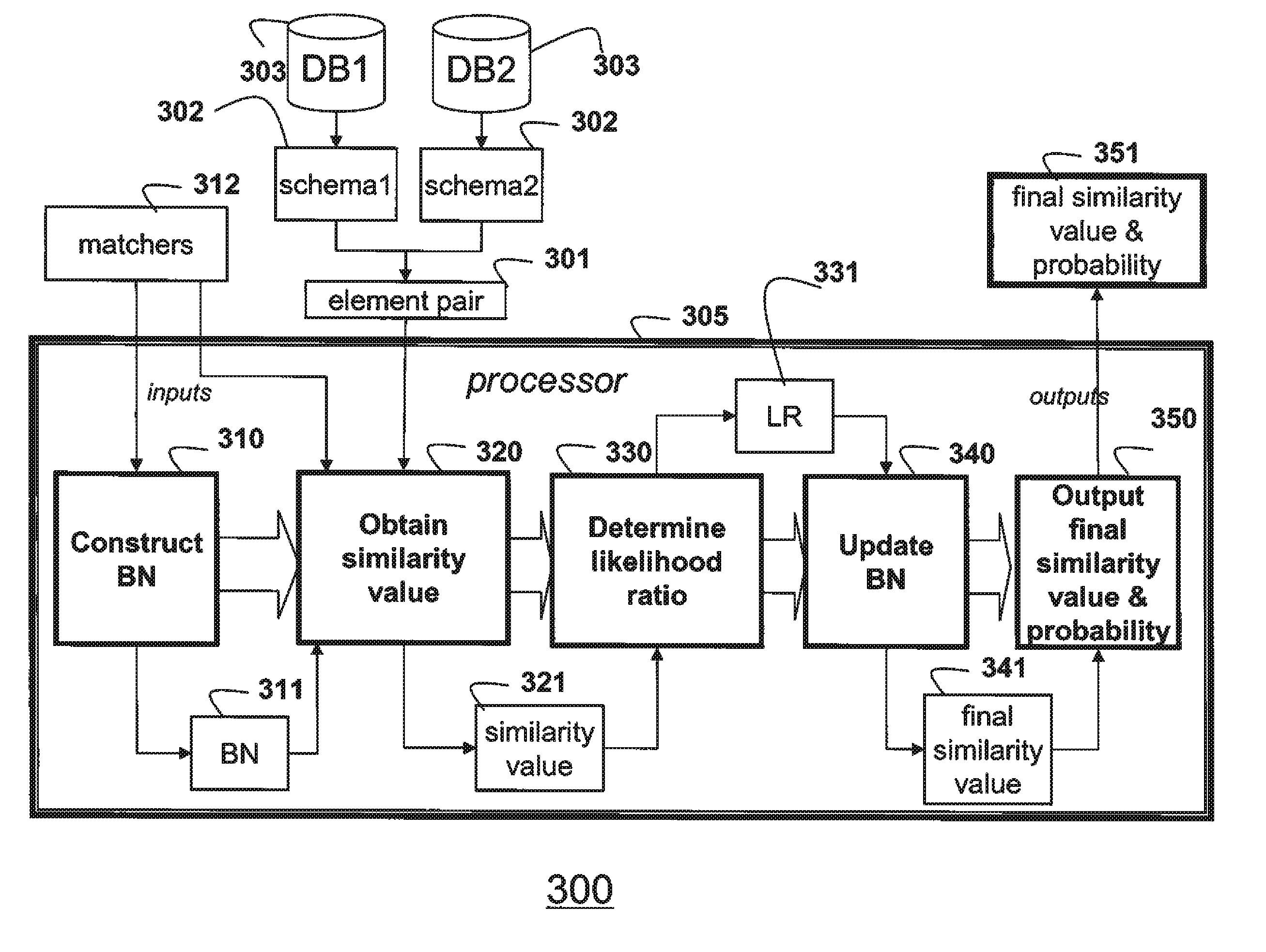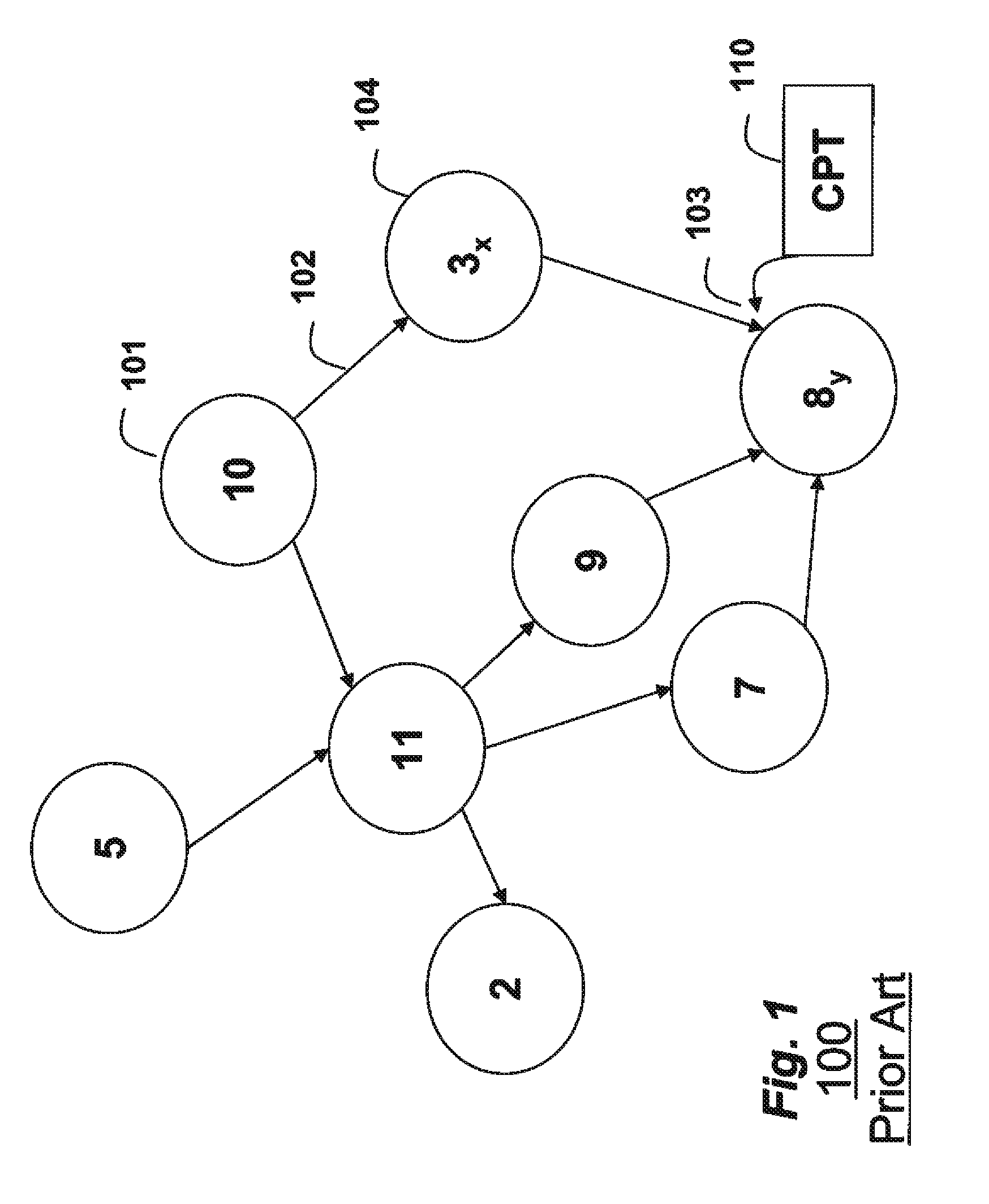Method for matching elements in schemas of databases using a Bayesian network
a database schema and bayesian network technology, applied in the field of database management, can solve problems such as improper correlation modeling, difficult asm problem, and other forms of statistical dependen
- Summary
- Abstract
- Description
- Claims
- Application Information
AI Technical Summary
Benefits of technology
Problems solved by technology
Method used
Image
Examples
Embodiment Construction
[0019]The embodiments of the invention provide a method for matching elements in two schemas for two corresponding databases using automatic schema matching (ASM). The method uses a composite matcher that outputs a similarity value and probability that is based on belief reasoning in a Bayesian network. The BN is constructed from a set of matchers that constitute the composite matcher.
[0020]Representation
[0021]A shown in FIG. 1, a general Bayesian network (BN), as known in the art, is a probabilistic model that represents a set of random variables and corresponding conditional dependencies by means of a directed acyclic graph (DAG) 100 of (ten) nodes 101 and directed edges 102 connecting the nodes. Each edge in the DAG between two nodes signifies that a variable Y corresponding to a child node 103 is statistically conditionally dependent on a variable X corresponding to the parent node.
[0022]This dependence can be expressed in a conditional probability table (CPT) stored in the chil...
PUM
 Login to View More
Login to View More Abstract
Description
Claims
Application Information
 Login to View More
Login to View More - R&D
- Intellectual Property
- Life Sciences
- Materials
- Tech Scout
- Unparalleled Data Quality
- Higher Quality Content
- 60% Fewer Hallucinations
Browse by: Latest US Patents, China's latest patents, Technical Efficacy Thesaurus, Application Domain, Technology Topic, Popular Technical Reports.
© 2025 PatSnap. All rights reserved.Legal|Privacy policy|Modern Slavery Act Transparency Statement|Sitemap|About US| Contact US: help@patsnap.com



